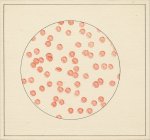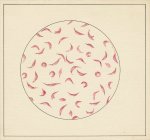| Hemoglobin and Sickle Cell Anemia |
|
Hemoglobin is a molecule inside the red blood cells of human blood. It has two parts:
the heme and the globin. The heme contains iron and transports oxygen from the lungs
to the tissues as well as takes carbon dioxide from the tissues to the lungs. Globin,
a complex macromolecule, is a protein that helps to keep the hemoglobin liquefied.
When hemoglobin combines with oxygen and carbon monoxide, it produces oxyhemoglobin
and carbonmonoxyhemoglobin respectively; two substances that Pauling became extensively
familiar with during the 1930s and 1940s and continued to investigate structurally
until the late 1970s.
In addition to hemoglobin itself, Pauling was also interested in a disease of the
blood, sickle cell anemia. Sickle cell anemia is a deadly, hereditary disease that
primarily afflicts people of African descent. The disease got this name because the
red blood cells of the sufferers bend into a crescent shape when deoxygenated. Oxygenated
hemoglobin in people with sickle cell anemia is like that of healthy individuals;
it retains its discus shape. Related to sickle cell anemia is the less debilitating
affliction, sickle cell trait, in which sufferers have inherited sickle cell hemoglobin
from one parent and normal hemoglobin from the other. Pauling learned of sickle cell
anemia in 1945 and intermittently conducted research on the disease until his death
in 1994.
|
|
Click images to enlarge

Pastel drawing of normal Hemoglobin cells, 1964.

Pastel drawing of sickled Hemoglobin cells, 1964.
"In the United States about 10 percent of the Negro population (and a much smaller
percentage of the remaining population) carry the gene for sickle-cell-anemia hemoglobin
or the somewhat similar gene for hemoglobin C. About 1 child in 400 born in the Negro
population in the United States inherits two of these genes and in consequence suffers
from the very serious disease, sickle cell anemia (or the related diseases involving
the hemoglobin-C gene)."
|

